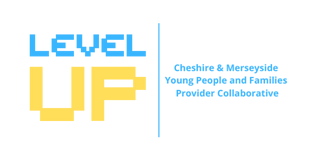- How to use this guidance
- Introduction to the Complex Needs Escalation and Support Tool (CNEST)
- Who is CNEST for?
- Using CNEST Sections A, B and C
- How to get final CNEST ratings and what clinical recommendations to use
- Related documents
- Complex Needs Escalation and Support Tool (CNEST) Training
The question of who the CNEST can be used for can be considered in terms of the evidence base and clinical utility. We have grouped children and young people into three main categories:
- Those for whom the CNEST is evidence based and has good clinical utility.
- Those for whom more evidence is required but there is early indication of clinical utility.
- Those for whom further research and clinical utility data is required.
The CNEST was developed to provide a consistent, evidence-based approach to the early identification of young people who have an increased likelihood of admission to a children and young people’s mental health services (CYPMHS) general adolescent inpatient unit (GAU), placement breakdown or custody. As described above, the evidence base for the development of this tool included admissions data for this population (Ancora House) and co-production with experts with experience from this population. Access to a GAU is usually via a community children and young people’s mental health (CYPMH) service referral but may also be through a young person presenting in mental health crisis at an Emergency Department where the assessing clinician makes a referral.
The NHS Long Term Plan (2019a) recommends the use of the Thrive framework (Wolpert et al., 2019) to offer an integrated, multi-agency approach to children and young people’s mental health across health, social care, education, and the voluntary sector. The Thrive Framework conceptualises the mental health and wellbeing needs of children, young people, and families into five needs-based groupings: Thriving, Getting Advice, Getting Help, Getting More Help, Getting Risk Support. Young people who have an increased likelihood of admission are those in the ‘Getting more help’ quadrant and those in the ‘Getting risk support’ quadrant. Thrive describes these groups as:
Getting more help:
- The child or young person may be unable to participate age appropriately in daily activities in at least one context (e.g. school, home, with peers) or maybe even in all domains (e.g. staying at home or in bed all day without taking part in social activities).
- They may need constant supervision (due to their level of difficulties they are no longer managing self-care) and experience distress on a daily basis.
- This grouping might include children with a range of overlapping needs that mean they may require greater input, such as the coexistence of autistic spectrum disorder (ASD), major trauma or broken attachments.
Getting risk support:
- Children, young people, and families who are currently unable to benefit from evidence-based treatment but remain a significant concern and risk.
- This group might include children and young people who routinely go into crisis but are not able to make use of help offered, or where help offered has not been able to make a difference.
NHS England policy states that for people with a learning disability or autism “early identification of…risk of admission to a mental health hospital and … access to person-centred planning and support are essential for the prevention of avoidable admissions. If someone with a learning disability or an autistic person does need to be admitted, this should be for the shortest time possible and during their stay they should receive high standards of mental health and physical healthcare” (NHSE, 2023).
Dynamic support registers (DSRs) and Care (Education) and Treatment Reviews (C(E)TRs) are essential elements of the pathway providing people with a learning disability and autistic people with appropriate support and care at the right time. The Children and Young People Dynamic Support Database Clinical Support Tool (CYP DSD-CST; CWP, 2019), developed by Cheshire and Wirral Partnership NHS Foundation Trust (CWP), is a needs stratification tool that can be used to identify needs that impact on the likelihood of increased admission to Tier 4 CAMHS for children and young people with a learning disability and / or Autism (Appendix D). This tool is recommended by NHS England for use with all young people with a learning disability and / or Autism (NHSE, 2023).
Research has found that up to half of the young people admitted to Tier 4 CAMHS with a learning disability or autism do not have this diagnosis upon admission (Pender et al., in press). The CNEST is an inclusive tool for all children and young people as it can be used with children and young people with suspected as well as confirmed diagnoses of learning disability and autism. Furthermore, CNEST builds on the learning from the CYP DSD-CST, as it embeds the factors from the DSD-CST and is evidence based with robust methodology. The CNEST project team has consulted with local users of the CYP DSD-CST as well as the developers of the CYP DSD-CST and feedback has recommended that the CNEST can be used instead of the CYP DSD-CST as it includes all CYP DSD-CST factors and has additional factors that may identify areas of unmet need. For the purposes of the Dynamic Support Database (DSD) the CNEST ratings of high, medium, and low level of need, equate to red, amber and green accordingly.
ADVICE: The CNEST should be used for all young people who are in (or who meet the criteria for) the getting more help or getting risk support quadrants of THRIVE framework. This includes young people with mild learning disabilities and/or autism.
Early indication of clinical utility, more evidence required:
Children and young people with the following characteristics were not included in the cohort for the development of the tool:
- Children under the age of 13.
- Children and young people with eating disorders.
- Children and young people with a moderate learning disability.
- Children and young people with severe or profound and multiple learning disabilities.
- Children and young people with mild mental health difficulties.
However, feedback was sought from CYPMH professionals working with these groups of children and young people and the following advice was given.
Children under the age of 13
Feedback from CYPMH professionals working children under the age of 13 suggests that the CNEST has adequate clinical utility for needs stratification and identification of unmet need in this group, in the absence of any other tool.
Children and young people with eating disorders
Feedback from CYPMH professionals has highlighted that the CNEST may not identify the physical health needs and needs of young people with eating disorders. Therefore, it is recommended that CYPMH eating disorder teams continue to use the Medical Emergencies in Eating Disorder Guidance (MEED, RCPsych, 2022) in the first instance. Clinicians may then use the CNEST to identify any additional factors and to identify further unmet needs for the young person and their family.
Children and young people with moderate learning disability
Feedback from CYPMH professionals working children and young people with moderate learning disability suggests that the CNEST has adequate clinical utility for needs stratification and identification of unmet need in this group.
Children and young people with severe or profound and multiple learning disabilities
Feedback from CYPMH professionals working with this group of young people suggested that whilst the dynamic support database clinical support tool (DSD-CST) items are embedded within the CNEST, different language is used, and clinicians may feel that the DSD-CST is the best fit for this population.
Children and young people with mild mental health difficulties
Feedback from CYPMH professionals working with this group of young people suggested that the CNEST might identify areas of unmet needs for children with mild mental health difficulties (those in Getting Advice or Getting Help Thrive quadrants). However, this group are less likely to have a significant level of complexity that makes them at increased likelihood of admission to Tier 4 CAMHS and therefore they are unlikely to require discussion at the Gateway meeting. Alternative tools such as the Current View (Jones et. al., 2013) would give information about presenting difficulties, complexity factors, contextual problems, and education difficulties.
ADVICE: Clinicians may prefer to use alternative tools for needs stratification or clinical prioritisation purposes.
|
Please note that the CNEST is not a clinical assessment tool, it is a needs stratification tool.
As with all clinical practice, decisions about the care of young people should be based on person-centred biopsychosocial assessments and undertaken by experienced CYPMH clinicians. |

